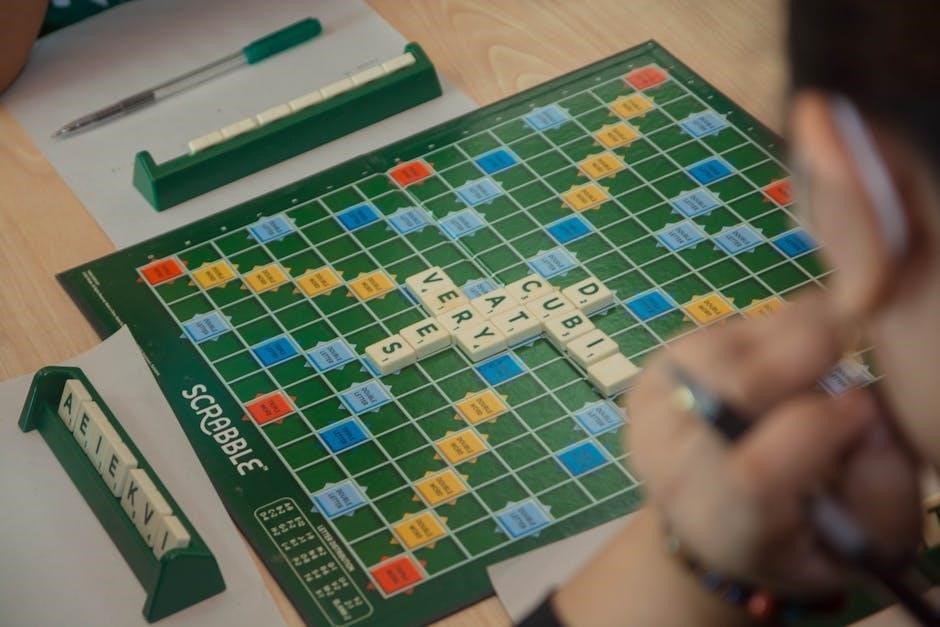cgp ks2 english grammar punctuation and spelling answers pdf
CGP KS2 English resources are widely regarded as essential tools for mastering grammar, punctuation, and spelling skills. These comprehensive study materials are specifically designed to align with the National Curriculum, providing students with targeted practice and detailed explanations. The resources include a range of question books, answer guides, and revision materials, all structured to support learning and progress tracking. With a focus on key concepts such as parts of speech, sentence structure, and spelling patterns, CGP materials cater to students of all abilities. The inclusion of self-assessment features, like tick-boxes and answer sections, allows pupils to identify areas for improvement and build confidence. Available for different school years, these resources offer a structured and engaging approach to KS2 English preparation.

Overview of CGP KS2 English Grammar, Punctuation, and Spelling
CGP KS2 English Grammar, Punctuation, and Spelling resources are widely regarded as some of the most comprehensive and effective study aids available for students preparing for Key Stage 2 English exams. These resources are meticulously designed to align with the National Curriculum, ensuring that students cover all the essential topics in a structured and engaging manner. Whether you’re a student seeking to improve your skills, a parent guiding your child, or a teacher looking for reliable materials, CGP resources are an excellent choice.

One of the standout features of CGP KS2 English Grammar, Punctuation, and Spelling materials is their clarity and accessibility. The content is presented in a way that is easy for students to understand, with clear explanations and examples that break down complex concepts into manageable parts. For instance, topics such as verb tenses, apostrophes, and homophones are explained with precision, making them less intimidating for young learners. The resources also include a wide range of practice questions, allowing students to test their understanding and identify areas where they need more practice.
The CGP KS2 English Grammar, Punctuation, and Spelling resources are divided into three main sections, each focusing on a specific skill set: grammar, punctuation, and spelling. The grammar section delves into the fundamentals of sentence structure, including nouns, verbs, adjectives, and adverbs. It also explores more advanced concepts like clauses, phrases, and sentence types. Punctuation is another critical area, with detailed guidance on the correct use of commas, full stops, question marks, and other punctuation marks. The spelling section is equally comprehensive, offering strategies for improving spelling accuracy and tackling common pitfalls.

What makes CGP resources particularly valuable is their emphasis on practice and revision. The materials include numerous exercises and quizzes that help students reinforce their learning and track their progress over time. For example, the CGP KS2 English Grammar, Punctuation, and Spelling Answers PDF provides detailed solutions to all the practice questions, enabling students to review their work and learn from their mistakes. This feature is especially useful for self-study, as it allows students to identify areas where they need additional support.
In addition to the core content, CGP resources often include helpful tips and strategies for approaching exams with confidence. For instance, students are advised on how to manage their time effectively during tests, how to read questions carefully, and how to avoid common errors. These practical insights can make a significant difference in a student’s performance, helping them to showcase their knowledge more effectively.
Overall, the CGP KS2 English Grammar, Punctuation, and Spelling resources are an invaluable tool for anyone looking to master the fundamentals of English. With their clear explanations, extensive practice materials, and focus on revision, these resources provide students with a solid foundation for success in their studies and beyond.
Importance of Practice Materials for KS2 English
Practice materials play a pivotal role in the preparation and mastery of KS2 English, particularly in the areas of grammar, punctuation, and spelling. These resources are designed to help students consolidate their learning, identify areas for improvement, and build confidence in their abilities. Among the most popular and effective practice materials available are those provided by CGP, including the CGP KS2 English Grammar, Punctuation, and Spelling Answers PDF. These resources have become indispensable tools for students, parents, and educators alike, offering a structured approach to revision and practice.
The importance of practice materials cannot be overstated. Regular practice helps students develop a deeper understanding of key concepts and reinforces their learning over time. For instance, grammar rules, such as subject-verb agreement or the correct use of tenses, are best mastered through consistent practice. Similarly, punctuation and spelling require repeated exposure and application to become second nature. By using high-quality practice materials like those from CGP, students can engage in targeted exercises that address specific skills, ensuring a well-rounded grasp of the subject.

One of the key benefits of practice materials is their ability to build confidence. Many students feel anxious about English exams, particularly when it comes to grammar, punctuation, and spelling. However, by working through practice questions and reviewing answers, students can familiarize themselves with the types of questions they may encounter. This familiarity not only reduces anxiety but also equips students with the skills and strategies needed to approach challenges with confidence. The CGP KS2 English Grammar, Punctuation, and Spelling Answers PDF is particularly useful in this regard, as it provides clear explanations and solutions that help students understand where they went wrong and how to improve.
Another critical aspect of practice materials is their role in identifying and addressing weaknesses. No two students learn at the same pace or in the same way, and practice materials allow for personalized learning. For example, a student who struggles with homophones can focus on exercises that target this specific area, while another student who finds punctuation challenging can devote more time to relevant drills. The CGP resources are designed to cater to individual needs, offering a wide range of exercises that cover all aspects of KS2 English. By regularly using these materials, students can pinpoint their strengths and weaknesses, enabling them to allocate their study time more effectively.
Practice materials also play a significant role in developing essential exam skills. Time management, for instance, is a crucial aspect of performing well in exams. CGP practice materials often include timed exercises or mock tests, helping students learn how to allocate their time wisely and complete questions within the allotted period. Additionally, these resources teach students how to approach different types of questions, such as multiple-choice, short-answer, and essay-style questions. By familiarizing themselves with these formats, students can develop a sense of routine and reduce the likelihood of panicking during exams.
Finally, practice materials encourage independent learning, a skill that is invaluable both in and out of the classroom. With resources like the CGP KS2 English Grammar, Punctuation, and Spelling Answers PDF, students can take ownership of their learning, working through exercises at their own pace and reviewing their progress as needed. This level of autonomy not only fosters a sense of responsibility but also allows students to develop a growth mindset, viewing challenges as opportunities to learn and improve rather than obstacles to be feared.

Grammar in KS2 English
Grammar is a fundamental component of the KS2 English curriculum, focusing on the structure and rules that govern the English language. It equips students with the skills to communicate effectively, both in writing and speech. Key areas include word types (nouns, verbs, adjectives), sentence structure, and punctuation. Understanding grammar helps students express ideas clearly and accurately, laying the foundation for advanced literacy skills. Resources like the CGP KS2 English Grammar, Punctuation, and Spelling Answers PDF provide comprehensive practice, ensuring mastery of grammar rules and their application in context. Regular practice with such materials reinforces learning, enabling students to apply grammar confidently in their writing and everyday communication.
Key Concepts in KS2 English Grammar
KeyStage 2 (KS2) English grammar focuses on building a strong foundation in the rules and structures of the English language. These concepts are essential for students to develop clear and effective communication skills. The CGP KS2 English Grammar, Punctuation, and Spelling resources, including the popular CGP KS2 English Grammar, Punctuation, and Spelling Answers PDF, provide comprehensive coverage of these key areas.
Parts of Speech
Understanding parts of speech is a cornerstone of KS2 grammar. Students learn to identify and use nouns, pronouns, verbs, adjectives, adverbs, prepositions, conjunctions, and interjections. For example, nouns refer to people, places, or things (e.g., “cat,” “school”), while verbs describe actions or states (e.g., “run,” “is”). Pronouns replace nouns in sentences, such as “he,” “she,” or “they.” Adjectives and adverbs modify nouns and verbs, respectively, adding detail to descriptions (e.g., “happy,” “quickly”).

Sentence Structure
Sentence structure is another critical concept. Students learn about simple, compound, and complex sentences. Simple sentences consist of a single clause with a subject and predicate (e.g., “She ate an apple.”). Compound sentences join two or more independent clauses using conjunctions like “and” or “but” (e.g., “She ate an apple, and he drank milk.”). Complex sentences include an independent clause and one or more dependent clauses, often introduced by subordinating conjunctions like “because” or “although” (e.g., “She ate an apple because she was hungry.”).
Punctuation
Punctuation is vital for clarifying meaning in written English. KS2 students learn to use full stops, commas, question marks, exclamation marks, and other punctuation marks correctly. For instance, commas are used to separate items in a list or to indicate a pause in a sentence (e.g;, “She bought apples, bananas, and oranges.”). Question marks and exclamation marks are used to end questions and express strong emotions, respectively (e.g., “What time is it?” or “Wow, that’s amazing!”).
Verb Tenses
Verb tenses indicate when an action takes place. KS2 students explore present, past, and future tenses, as well as perfect and continuous forms. For example, the present tense describes current actions (e.g., “She eats”), the past tense describes completed actions (e.g., “She ate”), and the future tense describes actions yet to happen (e.g., “She will eat”). Perfect tenses emphasize the completion or duration of an action (e.g., “She has eaten” or “She is eating”).
Subject-Verb Agreement
Subject-verb agreement ensures that verbs match their subjects in number. Singular subjects take singular verbs, while plural subjects take plural verbs (e.g., “He runs” vs. “They run”). This concept helps students avoid common grammatical errors and ensures clarity in their writing.
Word Formation
Word formation involves creating new words by adding prefixes, suffixes, or changing word endings. For example, adding “-ed” to a verb forms the past tense (e.g., “walk” becomes “walked”), while adding “-er” to an adjective forms the comparative (e.g., “hot” becomes “hotter”). Understanding word formation expands students’ vocabulary and enhances their writing skills.
The CGP resources, such as the CGP KS2 English Grammar, Punctuation, and Spelling Answers PDF, provide detailed explanations, examples, and practice exercises to help students master these key grammar concepts. By practicing regularly and reviewing these areas, students can build confidence and proficiency in their use of English grammar.
Common Grammar Mistakes and How to Avoid Them
Grammar is a fundamental aspect of English, and even with careful study, students often make mistakes. The CGP KS2 English Grammar, Punctuation, and Spelling resources, including the CGP KS2 English Grammar, Punctuation, and Spelling Answers PDF, highlight common errors and provide practical tips to help students improve. Below are some of the most frequent grammar mistakes and strategies to avoid them.
Subject-Verb Agreement Errors
One of the most common mistakes is incorrect subject-verb agreement. This occurs when the verb does not match the number (singular or plural) of the subject. For example, saying “The cat was sleeping” is correct, but “The cats was sleeping” is incorrect. The verb must agree with the subject: “The cats were sleeping.” To avoid this mistake, students should always check whether the subject is singular or plural before choosing the verb form.
Misuse of Apostrophes
Apostrophes are often misused in possessive pronouns and contractions. For instance, many students confuse “its” (the possessive form of “it”) with “it’s” (the contraction of “it is” or “it has”). A helpful tip is to remember that apostrophes are only used in contractions or to show possession. For example, “The cat chased its tail” is correct, while “The cat chased it’s tail” is incorrect because “it’s” implies “it is” or “it has,” which doesn’t make sense in this context.
Confusing Homophones

Homophones, words that sound the same but have different meanings, are a frequent source of errors. Common examples include “their,” “there,” and “they’re”; and “your” and “you’re.” Students often mix these up in sentences. For example, “Their cat is sleeping there” is correct, but “They’re cat is sleeping their” is incorrect. To avoid confusion, students should read their sentences aloud and ensure the word they’ve chosen makes sense in the context.
Sentence Structure Errors
Run-on sentences and sentence fragments are common mistakes. A run-on sentence occurs when two or more independent clauses are joined without proper punctuation, such as “I went to the park I played with my friends.” To fix this, students can use a comma and a conjunction (e.g., “I went to the park, and I played with my friends”) or split the sentence into two (“I went to the park. I played with my friends.”). Fragments, on the other hand, are incomplete sentences. For example, “Because I was tired” is a fragment and should be completed with a main clause: “I went to bed because I was tired.”
Spelling Mistakes
Spelling errors are common, even among skilled writers. Words like “their/there/they’re,” “to/too/two,” and “your/you’re” are often misspelled. To avoid these mistakes, students should keep a list of tricky words and practice them regularly. Using mnemonic devices or visual reminders can also help. For example, “their” can be remembered as “they’re here,” while “there” refers to a place.
Misplaced Modifiers
Misplaced modifiers are words or phrases that are not placed near the word they describe, leading to confusing sentences. For example, “She almost drove her kids to school every day” implies that she nearly drove them but didn’t, whereas “She drove her kids to school almost every day” means she did it nearly daily. To avoid this, students should ensure that modifiers are placed as close as possible to the word they modify.
Tense Inconsistency
Switching tenses within a paragraph or sentence can confuse readers. For example, “I went to the park, and I play on the swings” incorrectly shifts from past tense (“went”) to present tense (“play”); The correct sentence should use consistent tense: “I went to the park, and I played on the swings.” Students should read their writing carefully to ensure tenses remain consistent throughout.
Punctuation Errors
Punctuation mistakes, such as missing commas or periods, can significantly alter the meaning of a sentence. For example, “Let’s eat Grandma” (missing comma) implies something entirely different from “Let’s eat, Grandma.” To avoid such errors, students should practice proper punctuation rules and proofread their work thoroughly.
By understanding these common mistakes and practicing regularly with resources like the CGP KS2 English Grammar, Punctuation, and Spelling Answers PDF, students can improve their grammar skills and write with confidence. Remember, grammar is like a puzzle—once you master the rules, the pieces fall into place!
Effective Grammar Practice Strategies
Mastering grammar is a cornerstone of English proficiency, and consistent practice is essential for students to achieve confidence and accuracy. The CGP KS2 English Grammar, Punctuation, and Spelling resources, including the CGP KS2 English Grammar, Punctuation, and Spelling Answers PDF, provide comprehensive tools to help students refine their grammar skills. Below are some effective strategies for practicing grammar effectively.
Regular Practice with Worksheets
Consistency is key when it comes to grammar practice. Using worksheets from the CGP resources ensures that students are exposed to a variety of grammar topics regularly. These worksheets are designed to cover key areas such as verb tenses, subject-verb agreement, punctuation, and sentence structure. By dedicating a short time each day to completing these exercises, students can gradually build their grammar knowledge and reduce errors over time.
Interactive Activities and Games
Grammar practice doesn’t have to be boring! Incorporating interactive activities and games can make learning engaging and fun. For example, teachers or parents can create quizzes, crossword puzzles, or online games that focus on specific grammar rules. The CGP resources also include engaging exercises that encourage active participation. This approach not only helps students retain information better but also makes grammar practice feel less like a chore.
Focus on Understanding Rules
Memorizing grammar rules without understanding them is not an effective long-term strategy. Encourage students to delve into the “why” behind the rules. For instance, understanding why apostrophes are used for possession or how to identify clauses in a sentence can make grammar feel less arbitrary. The CGP resources are designed to explain these rules clearly, providing examples that help students grasp the logic behind them.
Apply Grammar in Writing
Grammar is not just about filling in blanks on a worksheet; it’s about using it effectively in real writing. Encourage students to apply the grammar they’ve learned in creative writing exercises or short essays. For example, after learning about verb tenses, they can write a short story using past, present, and future tenses correctly. The CGP KS2 English Grammar, Punctuation, and Spelling Answers PDF provides examples of correct usage, which students can refer to as a guide.
Use Timed Exercises for Speed and Accuracy
Timed exercises are a great way to improve both speed and accuracy. Set a timer for 10-15 minutes and have students complete as many grammar questions as they can during that time. This technique helps build confidence and reduces the likelihood of careless mistakes. The CGP resources include timed practice sections that simulate exam conditions, preparing students for the pressures of formal assessments.
Visual Aids and Mnemonics
Visual learners often benefit from diagrams, charts, and mnemonic devices to remember grammar rules. For example, a diagram of sentence structure can help students identify subjects, verbs, and objects more clearly. Mnemonics, such as “Every Good Boy Does Fine” for musical notes, can also be adapted to remember grammar rules, like “Apostrophes Show Ownership” for possessive pronouns.
Peer Learning and Discussion
Learning with peers can be a powerful tool for reinforcing grammar concepts. Encourage students to work in pairs or small groups to discuss and solve grammar problems. Explaining grammar rules to others helps students solidify their own understanding and identify areas where they need more practice. The CGP resources include group activities that facilitate collaborative learning.
Track Progress and Celebrate Successes

Monitoring progress is a motivating factor for students. Use the answer keys provided in the CGP KS2 English Grammar, Punctuation, and Spelling Answers PDF to track improvements over time. Celebrate small victories, such as mastering a difficult grammar concept or achieving a higher score on a practice test. This positive reinforcement encourages students to stay motivated and continue practicing.
Learn from Mistakes
Mistakes are an inevitable part of the learning process, but they are also valuable opportunities for growth. When students make errors, encourage them to analyze what went wrong and how they can avoid the same mistake in the future. The CGP resources include detailed explanations for incorrect answers, helping students understand where they went wrong and how to improve.

By incorporating these strategies into their daily routine, students can develop a strong foundation in grammar and improve their overall English skills. The CGP KS2 English Grammar, Punctuation, and Spelling resources, including the CGP KS2 English Grammar, Punctuation, and Spelling Answers PDF, are invaluable tools for making grammar practice effective, enjoyable, and rewarding. Remember, consistent practice and a willingness to learn from mistakes are the keys to mastering grammar!